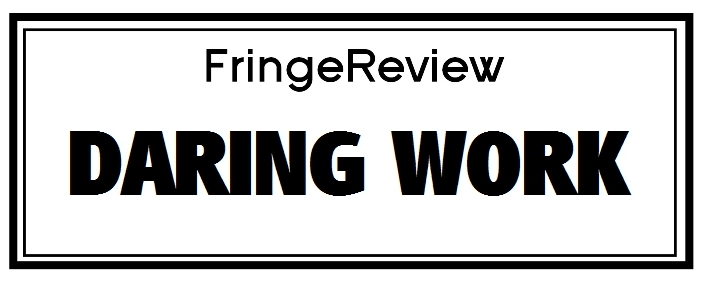FringeReview UK 2019
Dismantle This Room
Royal Court Theatre

Genre: Devised, Experimental, Immersive, New Writing, Site-Specific
Venue: Royal Court Jerwood Theatre Downstairs
Festival: FringeReview UK
Low Down
Dismantle This Room is an escape-this-room immersive experience. It’s a collaboration between director Milli Bhatia, producer Ingrid Marvin and writer Nina Segal, throwing open the Court’s Theatre Downstairs to small groups of people who’ve set their own payment for a ticket.
Review
Composer/conductor Pierre Boulez once remarked: ‘The most elegant solution to opera houses is to blow them up.’ He added 30 years on, having conducted many operas: ‘I still think so.’ Shortly after on 12th September 2001 he was arrested by literal-minded Swiss police, nervous at his part in the war on terror.
That’s a rather patriarchal anarch, but his 1960s iconoclasm still answers the fundamental impossibilities confronting anyone wishing to dismantle the patriarchy, the famous No Grey Areas discussions explored last year: the un-budgeable dominance of white and grey men in positions of authority in theatre.
Dismantle This Room is an escape-this-room immersive experience, something new to the Royal Court though familiar enough elsewhere in varying degrees of detail and marshalling, sometimes with placed actors, sometimes as here without – well almost. There’s a radio link one volunteer participant takes, through which instructions or answers can be conveyed.
It’s a collaboration between director Milli Bhatia, producer Ingrid Marvin and writer Nina Segal, throwing open the Court’s Theatre Downstairs to small groups of people who’ve set their own payment for a ticket, based on their feeling of privilege. So you can pay £1, £5, £12, or £18.
Segal and her company deliver a mission statement to the 14 or so participants. ‘It’s important to us that audience members define their own level of privilege, rather than it being assigned or assumed. Like all interactive elements of this experience, this moment is audience-led, with individuals defining the terms of their own participation.
‘This work is not about singling out particular individuals or behaviours, but about facilitating a conversation about power that requires the attention and input of us all. This show is entirely dependent on how each audience chooses to interact with it.’
After a brief introduction and such items as the radio volunteer and anybody feeling uneasy enabled to leave straight away, we sit and watch a wonderfully dreary film of self-congratulating patriarchs – till we think to do something else.
Essentially there’s two routes on stage, to dismantle the theatre’s structures from inside or outside, then a series of queasy compromises offered. It’s a bit boiling frog; our group makes one decision, and after some comic deconstructive theatre that can’t be divulged we’re shoved into critiquing mode. Whilst encouraged to formulate our own response, nudged with some disturbing figures, we emerge and are debriefed with some interesting questions.
One declared aim at the outset is to ensure that everyone should have equal voice: those who speak normally are encouraged to reflect, those shyer to speak out. Does that really work?
It’s about 65-75 minutes, wholly dependant on how the participants respond. The most rewarding immersions are often longer – one I participated in lasted well over two and a half hours. The Almeida staged a memorable gaming immersion last year, L£es. These are more exposing of our prejudices, our strengths and interactions. But such immersions are based on strong narrative pulls and this piece can’t provide that. It might perhaps be structured to last about 20-30 minutes more.
Of the 14, for the record three of us were BAME, and just two over 50. Most are younger theatre-oriented people: we’re asked not to divulge to each other what we do. One of us read out our recommendations. As for our choices, we were congratulated on our lack of compromise. Preen preen.
The group was notably friendly and the level of co-operative voices was strong. Nevertheless when asked we didn’t feel voices were equally heard. The problem-solving comes too furious demanding a typically dominant can-do, the sort of mind-set thriving in narrative flurry. And during the earlier phase (it was later muted) we were accompanied by a nagging chiller soundtrack that disrupts all but the most oblivious speaker. Kill it!
Most of all it’s over too quickly. To make this work as the team intends, you need a quieter, more extended conversation. That’s more complicated but things really happen if you’re in an immersive more than 90 minutes.
These minor caveats aside, it’s a great start to conversations we need more of, with longer immersions. The company ask serious questions of us and we can only hope the exercise is repeated. And it’s thrilling to blunder through the Theatre Downstairs, interact with warmly engaged people and grapple with the intractable problems of just who keeps the walls up. Dismantle this space? Yes. This theatre at least can take it.


















































